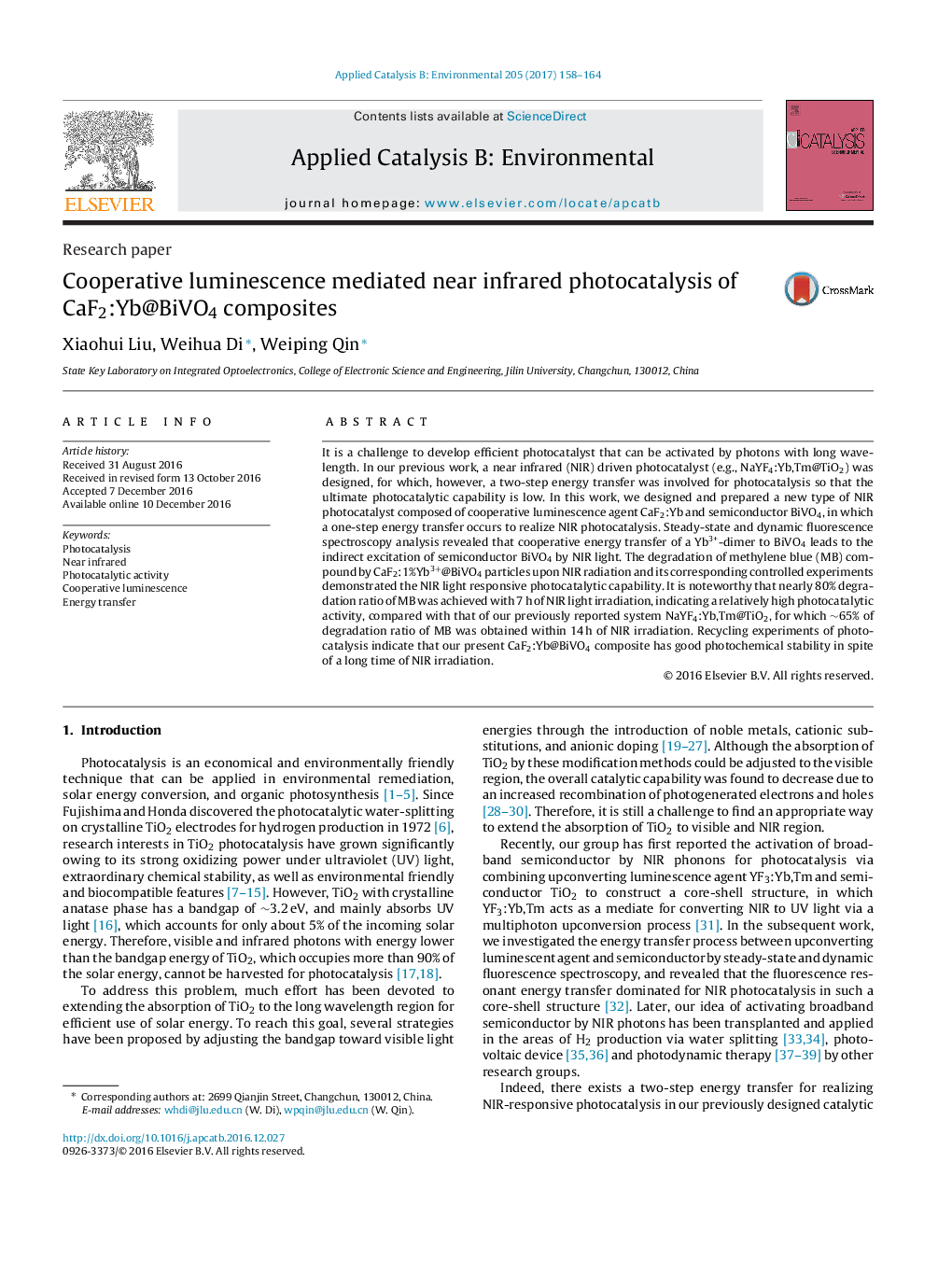| کد مقاله | کد نشریه | سال انتشار | مقاله انگلیسی | نسخه تمام متن |
|---|---|---|---|---|
| 6454297 | 1418815 | 2017 | 7 صفحه PDF | دانلود رایگان |

- A new type of NIR photocatalyst was designed and prepared.
- Only a one-step energy transfer was involved for NIR photocatalysis.
- The present photocatalyst exhibited a higher photocatalytic activity than that of our previously reported photocatalyst.
- This new type of photocatalyst showed good photochemical stability.
It is a challenge to develop efficient photocatalyst that can be activated by photons with long wavelength. In our previous work, a near infrared (NIR) driven photocatalyst (e.g., NaYF4:Yb,Tm@TiO2) was designed, for which, however, a two-step energy transfer was involved for photocatalysis so that the ultimate photocatalytic capability is low. In this work, we designed and prepared a new type of NIR photocatalyst composed of cooperative luminescence agent CaF2:Yb and semiconductor BiVO4, in which a one-step energy transfer occurs to realize NIR photocatalysis. Steady-state and dynamic fluorescence spectroscopy analysis revealed that cooperative energy transfer of a Yb3+-dimer to BiVO4 leads to the indirect excitation of semiconductor BiVO4 by NIR light. The degradation of methylene blue (MB) compound by CaF2:1%Yb3+@BiVO4 particles upon NIR radiation and its corresponding controlled experiments demonstrated the NIR light responsive photocatalytic capability. It is noteworthy that nearly 80% degradation ratio of MB was achieved with 7Â h of NIR light irradiation, indicating a relatively high photocatalytic activity, compared with that of our previously reported system NaYF4:Yb,Tm@TiO2, for which â¼65% of degradation ratio of MB was obtained within 14Â h of NIR irradiation. Recycling experiments of photocatalysis indicate that our present CaF2:Yb@BiVO4 composite has good photochemical stability in spite of a long time of NIR irradiation.
145
Journal: Applied Catalysis B: Environmental - Volume 205, 15 May 2017, Pages 158-164